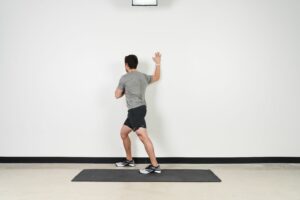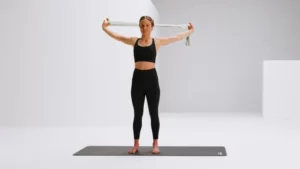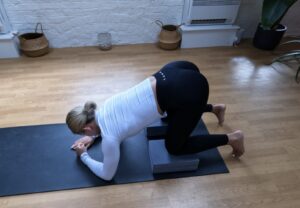

First, let’s understand why muscles feel ‘tight’.
Muscles often feel ‘tight’ due to the joint shape and position — not because they are short, weak, or in need of stretching.
A quick example: the hamstrings
If I lack internal rotation (the ability to put force into the ground), I may orient or dump the pelvis forward as I arch my lower back.
Now consider the hamstring muscles in this scenario:
-
This orientation causes the hamstrings to become lengthened
-
In response, the hamstrings contract hard to prevent damage (i.e. pulling the muscle off the bone)
There you have it — your ‘tight’ hamstrings.
Stretching them won’t achieve anything.
You need to alter the joint shape and position that they attach to.
Why did your chest become ‘tight’ or your chest wall compress?
This actually happens because the back of the body compresses first, pushing the body forward toward the toes.
Why would the back of the body compress to push us forward?
Answer: To deal with gravity.
If I can’t produce force into the ground, my body will try to compensate by shoving forward — creating more pressure in the balls of the feet and toes to stay upright.
In doing so:
-
I squeeze/retract my shoulder blades
-
I arch my lower back
-
I shift my centre of mass forward
But the body can’t keep going forward indefinitely. Eventually, the chest wall compresses to push the body back, as the nervous system senses that I’m falling too far forward.
So what happens if you stretch the chest in this state?
If you’re:
-
Arching your lower back
-
Squeezing your shoulder blades together
-
And trying to ‘open’ the chest
…you’re just reinforcing the exact pattern that caused the chest wall to close and compress in the first place.
A more effective approach: Rock Back with Ribcage Expansion
This rock back exercise would be far more effective.
Why?
Because it allows you to:
-
Achieve chest expansion
-
While keeping the lower back open
-
Without compressing between the shoulder blades
How to cue this correctly:
-
Inhale as you push the ribcage back towards the shoulder blades
-
Exhale, and hold the new position
-
As you push the ribcage up toward the ceiling or back toward the shoulder blades, make sure not to crunch the front of the body
Keep long through the ‘zipper of the fleece’ — maintaining length and openness through the front line.
